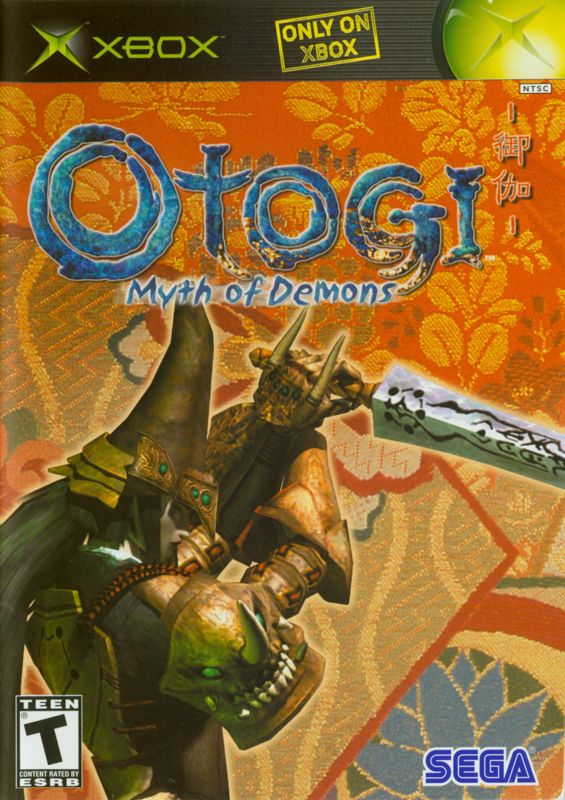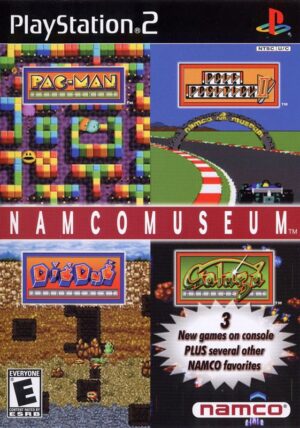Retro Replay Review
Gameplay
Otogi: Myth of Demons delivers a fast-paced third-person action experience that hinges on fluid swordplay and elemental sorcery. You step into the armored boots of Raikoh, a resurrected samurai imbued with supernatural stamina and a deadly blade. Combat centers on chaining light and heavy slashes, unleashing magic spells, and weaving in dash attacks to maintain momentum. Early encounters teach you the basics, but true mastery comes from experimenting with mid-air combos that let you soar and strike from unexpected angles.
(HEY YOU!! We hope you enjoy! We try not to run ads. So basically, this is a very expensive hobby running this site. Please consider joining us for updates, forums, and more. Network w/ us to make some cash or friends while retro gaming, and you can win some free retro games for posting. Okay, carry on 👍)
Between missions, Otogi offers a surprisingly deep upgrade system. Currency earned through demon hunting can be spent on weapon enhancements, new spells or consumable items that add layers of strategy to each stage. Grinding for gold isn’t a tedious chore here – you’ll happily revisit earlier chapters to unlock a powerful firestorm spell or a faster katana. This progression loop ensures you feel tangible growth in Raikoh’s arsenal, making even familiar demons fresh threats as you tailor your build.
Level design embraces three-dimensional combat arenas with verticality that few action games of its era dared to explore. Rooftops, crumbling pillars and floating platforms become as deadly as the demons lurking around corners. The only occasional frustration is the free-form camera, which sometimes loses track of Raikoh during aerial skirmishes. Still, when you nail a perfectly timed dash-slash from mid-air into a demon’s weak point, it’s immensely satisfying and highlights Otogi’s crisp combat foundations.
Graphics
Visually, Otogi employs a striking art style that blends gothic fantasy with feudal Japan aesthetics. Textured stone walls, twisted demon forms, and blood-spattered courtyards create a haunting backdrop for each chapter. While the polygon counts feel dated by modern standards, clever use of dynamic lighting and particle effects breathes life into every swing of Raikoh’s sword. Fire spells send embers dancing across the screen, and water reflections shimmer beneath you as you traverse flooded temple halls.
The character models are gorgeously detailed, from Raikoh’s ornate armor to the grotesque features of oni and lesser yokai. Animations remain fluid throughout, especially during combo sequences when sword arcs and spellcasting flare with satisfying impact. Occasional texture pop-ins and blocky environment geometry can break immersion, but these are minor blemishes in an otherwise atmospheric presentation.
Cutscenes are rendered in-engine, giving a seamless transition from story beats to gameplay. Though voice acting is limited, emotive facial expressions and well-timed musical cues fill in the gaps. The shadow play cast by lanterns in moonlit courtyards and the swirling mist across battlefields further enrich this haunting world, demonstrating how Otogi’s graphics punch above their weight in capturing mythic dread.
Story
At its heart, Otogi: Myth of Demons is a redemption tale draped in Japanese folklore. You assume the role of Raikoh, once a legendary warrior who fell from grace and now exists in a half-life granted by the mysterious princess Shizuka. Tasked with cleansing Japan of an encroaching demon horde, Raikoh must balance his thirst for vengeance with a dawning realization of his own humanity. This internal conflict gives the narrative surprising depth for an action-focused title.
The game unfolds across nine chapters, each steeped in mythological references—from the demon-posessed Mount Fuji to haunted shrines echoing with the cries of trapped spirits. Rather than relying solely on cutscenes, Otogi peppers its storytelling through environmental details: crumbling totems, tortured murals and spectral echoes that reward players who take note of their surroundings. These touches build a sense of ancient dread woven into every level.
Supporting characters, including Shizuka and a few wandering monks, add emotional weight to Raikoh’s quest. Though dialogue can feel sparse, it’s effective at punctuating major battles and setting up stakes. By the time you confront the final demon lord, you’re invested in Raikoh’s fate and the salvation of a land teetering on the brink of eternal darkness.
Overall Experience
Otogi: Myth of Demons stands as a hidden gem in the early 2000s action genre. Its blend of sword-and-sorcery combat, vertical arena design and evocative Japanese mythos create an experience both challenging and atmospheric. While the camera sometimes struggles in tight spaces and the game’s length sits on the shorter side, its high-octane encounters and rewarding upgrade path keep you engaged from start to finish.
Replay value is amplified by the desire to experiment with different weapons and spells, seeking out tougher challenges in earlier levels or striving for faster completion times. The game’s pacing rarely lags, propelling you through gorgeously morbid environments to ever more fearsome demon adversaries. Even today, Otogi’s visceral combat and brooding tone feel remarkably fresh.
For fans of action games who crave a tasteful infusion of folklore and a protagonist on a path to redemption, Otogi: Myth of Demons delivers. Its blend of fluid combos, atmospheric visuals and myth-steeped storytelling forms a cohesive package that remains memorable decades after its release. If you’re willing to forgive a few technical wrinkles in service of a stylized journey, Raikoh’s crusade against darkness is well worth undertaking.
 Retro Replay Retro Replay gaming reviews, news, emulation, geek stuff and more!
Retro Replay Retro Replay gaming reviews, news, emulation, geek stuff and more!




Reviews
There are no reviews yet.